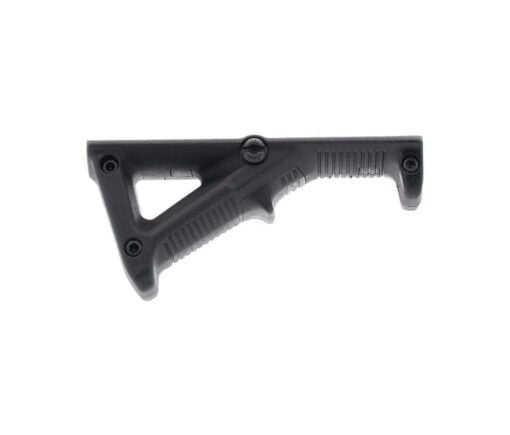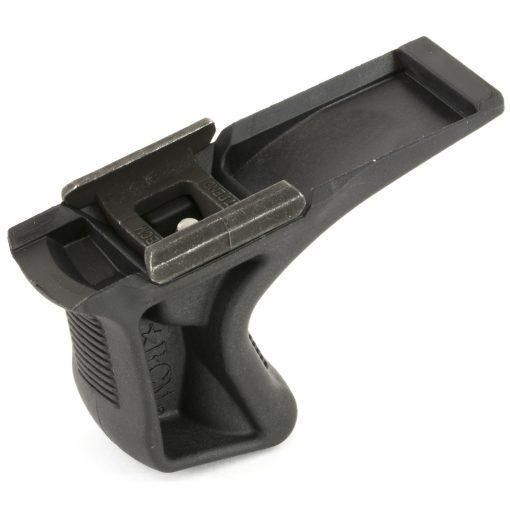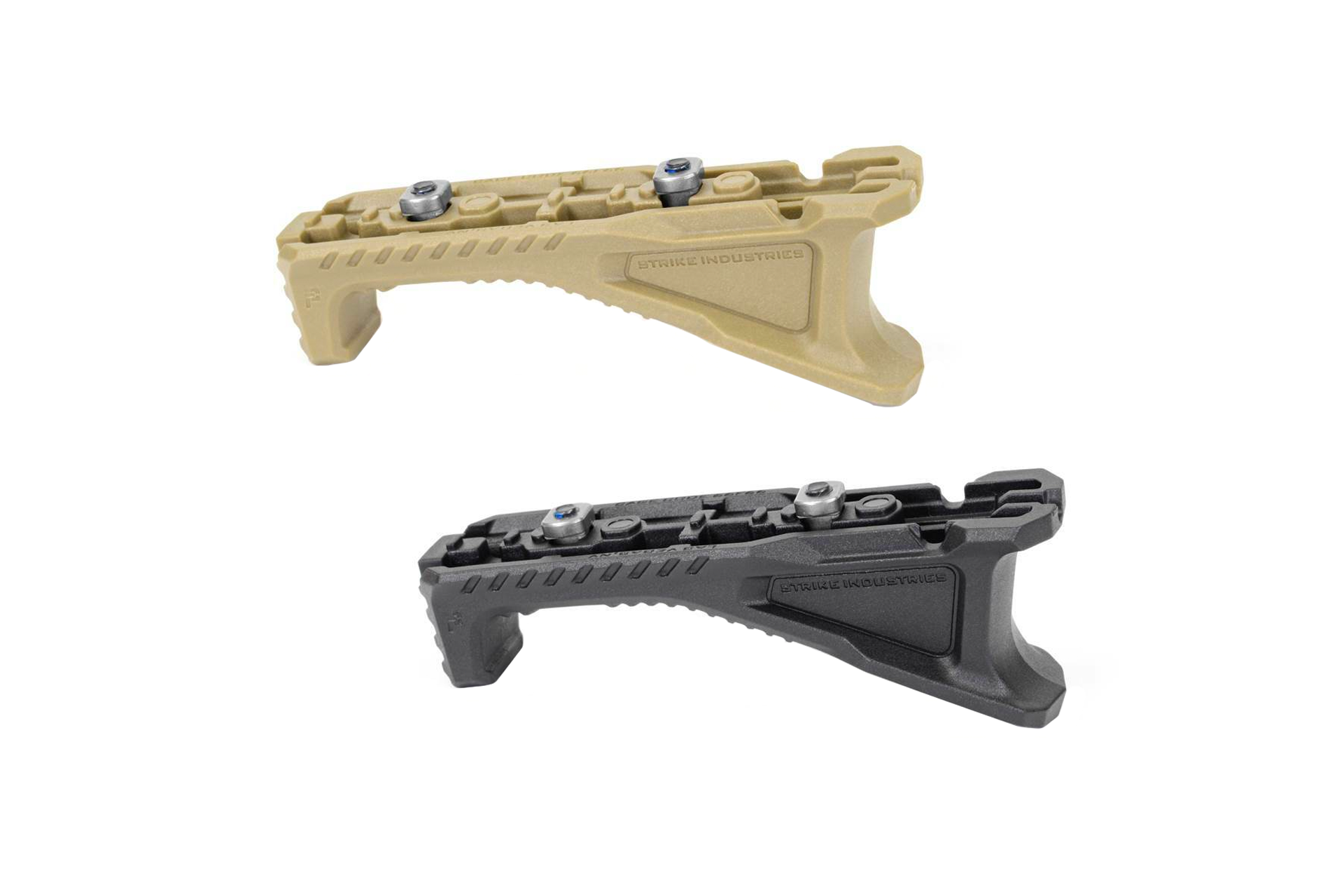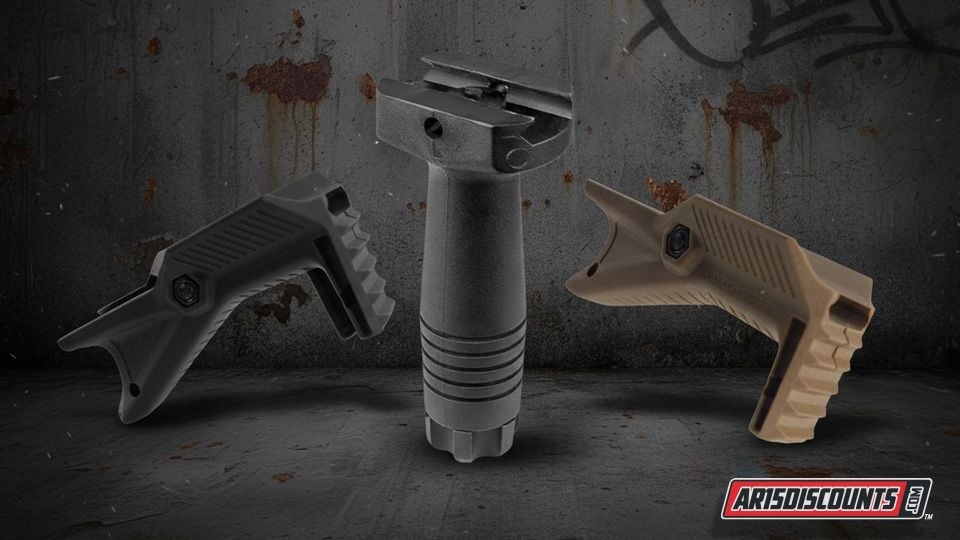Angled Foregrips, AR-15 Accessories, AR-15 Basics, Vertical Foregrips
AR-15 Foregrip Showdown: Angled vs Vertical, Which Is Better for Your Build in 2025?
When upgrading your AR-15, few accessories make as big a difference in control and comfort as the right foregrip. Whether you build a lightweight competition rig, a duty-ready carbine, or a do-it-all home defense platform, your foregrip choice (or not choosing one) directly impacts recoil management, wrist fatigue, and target transitions. In 2025, the classic debate between angled and vertical foregrip styles burns hotter than ever. Both deliver proven performance, but each shines in different scenarios.
At AR15Discounts.com, we test dozens of foregrip options, from budget polymer builds to premium CNC-machined designs. This guide compares real-world advantages, trade-offs, and top-performing picks without the fluff. By the end, you’ll know which foregrip style fits your shooting style and why.
Why Your Foregrip Matters More Than You Think
The foregrip is not just a hand stop. It’s the control interface between you and 30 rounds of 5.56 flying downrange. A well-chosen foregrip reduces muzzle rise, improves follow-up shot speed, and keeps your support hand in a natural, repeatable position. Poor grip choice means more fatigue, inconsistent aim, and slower splits. Both vertical and angled designs attach easily to M-LOK or Picatinny rails, but they solve different problems. Here’s what each type brings to the table.
Vertical Foregrip: The Proven Powerhouse
The vertical foregrip has been the gold standard since the M16A2 days. Extending straight down from your handguard, it gives your support hand a full, 90-degree handle to pull the rifle into your shoulder pocket. That leverage is unmatched when taming recoil during rapid fire or anchoring against barricades.
Shooters favor vertical grips for unrivaled recoil control. The downward pull helps keep the muzzle flat, ideal for 3-gun, CQB, or full-auto sims. It also acts as a heat shield for your hand during mag dumps, and the protruding grip doubles as a mini monopod when bracing on cover. Vertical grip variety is unmatched, from storage-equipped models to bipod hybrids.
Downsides include bulk and snag risk. A vertical grip can catch on slings, doors, or plate carriers during dynamic movement. The 90-degree angle can be hard on smaller hands and causes wrist strain on long sessions. Some jurisdictions view vertical grips on pistols as an assault-weapon feature, creating legal gray areas.
Angled Foregrip: The Modern Ergonomic Edge
The angled foregrip, typically canted 20 to 45 degrees rearward, is the new-school answer to old-school bulk. By aligning your wrist with the bore axis, it promotes a relaxed, thumb-over-bore hold that dominates competition circles and lightweight hunting builds.
Angled grips shine for all-day comfort. They reduce wrist torque and arm pump, perfect for matches or hiking with a slung rifle. The natural hand position speeds target-to-target movement and delivers faster transitions. Minimal bulk means less snagging and better compatibility with suppressors or slim rails. Angled grips also avoid some legal headaches in feature-restrictive states.
Trade-offs include less pulling power. An angled grip won’t anchor the rifle into your shoulder like a vertical grip. Most angled models skip battery compartments or tool stowage, limiting storage. Selection still trails vertical variety, though that gap is closing.
Foregrip Face-Off: Real-World Performance
In CQB or room clearing, the vertical grip earns top marks for leverage, while the angled grip favors faster manipulation but offers less pull. For 3-gun or competition, the angled grip is the speed king; the vertical grip feels solid but bulky. Hunting or all-day carry favors the angled grip for ergonomics, with the vertical grip becoming fatiguing over long sessions. Barricade shooting gives the vertical grip a natural brace advantage, while angled grips often need a dedicated hand stop. Legally, angled grips are usually cleaner in states like California and New York; vertical grips can trigger restrictions in some builds.
Bottom line: vertical equals control, angled equals comfort and speed. Your mission dictates the winner.
Best Foregrip Picks for 2025
No need to spend big to upgrade. Battle-tested options deliver pro-level performance at wallet-friendly prices. The Magpul MVG M-LOK remains a bestseller: lightweight, textured, and mounting flush, it makes a perfect first vertical grip. The BCM Gunfighter Mod 3 offers a slight cant for hybrid use, aggressive texture, and reverse-mount compatibility. The NBS Bipod Vertical Grip combines grip and deployable bipod for hunters.
For angled options, the Magpul AFG M-LOK is the original angled grip that reduces fatigue. The Strike Industries Enhanced Angled Grip adds cable management and modular mounting.

The BCM KAG Kinesthetic Angled Grip brings durability and palm-swelled ergonomics. The KAG moves away from traditional vertical designs in favor of an angled profile that emphasizes biomechanical efficiency. With about 20 degrees of forward rake, it cradles the support hand to relieve strain on the wrist, elbow, and shoulder, promoting smoother manipulations and faster reacquisition. Textured front and back panels create a natural finger channel that holds even with sweat or gloves, while the low-profile contour adds almost no girth to the platform.

All these picks are available now at AR15Discounts.com.
Which Should You Buy in 2025?
Choose vertical if you prioritize raw control, barricade work, or run a heavier-recoiling setup like .308 ARs. Choose angled if you want all-day comfort, faster splits, and a sleek, compliant build.
Still unsure? Start with the Magpul MVG vertical or the AFG angled…both are cheap, easy to swap, and simple to test at the range. Your wrists will tell you which is right.

Final Verdict: There’s No “Best”, Only the Best for You
In 2025, the foregrip landscape is richer than ever. Vertical grips remain the trusted workhorse. Angled grips are the rising star of ergonomics and speed. Both elevate your rifle, but only one will feel like an extension of your hand. Test both, shoot them side by side, and pick the one that shortens your splits and keeps you comfortable through the end of the session. Also remember, that for you, one not be necessary at all…or perhaps you’d be better served by a simple AR-15 handstop.
If your rifle is already balanced, comfortable to shoot, and you are getting fast, consistent splits with a solid support-hand position, adding a foregrip can do more harm than good. Extra hardware adds weight, bulk, and new snag points that can slow transitions, catch on gear, or force awkward hand placement that increases fatigue. There are also legal and practical risks, since certain configurations can change how a firearm is classified in some jurisdictions, and poorly chosen additions can interfere with accessories like lights, lasers, or suppressors. Don’t add gear just because others do; copying a trend can lock you into techniques you have not trained for, and it is usually easier and cheaper to improve fundamentals than to chase every accessory labeled “must-have.”


Vertical grips excel in recoil control by allowing a firm pull-back into the shoulder, reducing muzzle rise through leverage…ideal for full-auto or rapid semi-auto fire. Data from 3-Gun splits show vertical users averaging 0.18–0.22s transitions vs. 0.20–0.25s for angled. Angled foregrips promote a more natural C-clamp hold, minimizing wrist strain and enabling faster target transitions via thumb-over-bore pointing. For most AR-15 users, angled yields marginally quicker follow-ups (5–10% in drills) due to ergonomic alignment, while vertical dominates pure vertical recoil mitigation. Choice hinges on stance: modern isosceles favors angled; older bladed stances suit vertical.
An angled foregrip (e.g., Magpul AFG) rotates the support hand ~45° inward, aligning the wrist in a neutral handshake position—reducing ulnar deviation by 20–30° versus the 90° bend of a vertical grip. This lowers carpal tunnel stress and aligns the forearm with the bore axis, making natural point-of-aim more intuitive; the rifle “points where you look” without conscious cant adjustment. Vertical grips force a pronated wrist, shifting point-of-aim downward unless compensated by elbow elevation. Shooters report 15–20% faster sight acquisition with angled in dynamic drills due to reduced muscular compensation.
Angled grips dominate CQB for speed and maneuverability. The low-profile design clears doorframes, reduces snagging on kit, and supports a high thumb-over-bore grip for pie-ing corners without over-rotation. Vertical grips can print on plate carriers or catch slings during transitions. In force-on-force, angled users average 0.3s faster room entries and 12% quicker malfunction clears due to wrist mobility. Vertical shines in deliberate barricade work or when using the grip as a mono-pod, but for pure CQB fluidity, especially with short barrels, angled minimizes interference and fatigue during hours of structure clearing.
In USPSA PCC and 3-Gun, ~70% of Open/Tactical division shooters use angled foregrips (Magpul AFG/BCM KAG). Reasons: faster stage transitions (0.1–0.2s saved on 180° turns), reduced wrist fatigue over 8-stage matches, and compatibility with thumb-over-bore for driving the gun between targets. Top PCC shooters like Max Leograndis cite angled’s lower snag risk on props. Vertical grips persist in Heavy divisions with .308 rifles needing brute recoil control or among older shooters habituated to 90s techniques. Data from 2024 Nationals: top 10 PCC used 8 angled, 2 hand-stops only.
Yes…angled foregrips like the BCM KAG function as robust hand-stops, preventing the support hand from sliding past the muzzle under recoil or during malfunctions. The rearward slope locks the palm, offering 100% hand-stop utility plus grip surface. This dual-role makes angled more versatile than most vertical grips, which require separate stops (adding weight/complexity).
Angled foregrips reduce fatigue by 25–40% in extended sessions. The neutral wrist angle minimizes flexor/extensor strain; a 6-hour carbine course study showed angled users reporting 60% less forearm pump vs. vertical. Vertical grips require sustained isometric pull-back, fatiguing biceps/forearms faster—especially with 10+ lb. duty rifles. Patrol officers using angled (e.g., Haley Strategic Thorn) log 20% longer comfortable carry times. Vertical fatigue spikes after 2–3 hours of active grip; angled allows passive indexing, preserving grip strength for transitions or sidearm draws.

